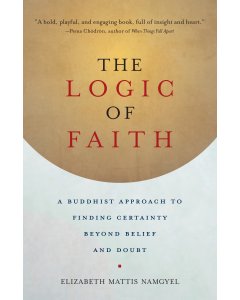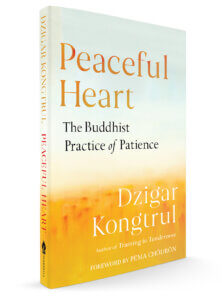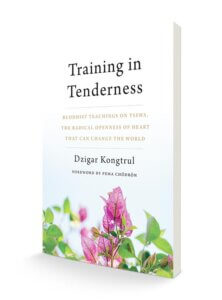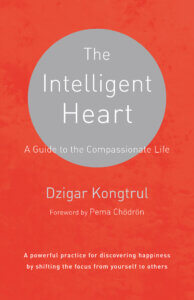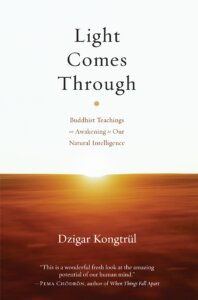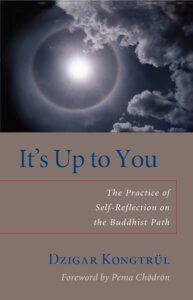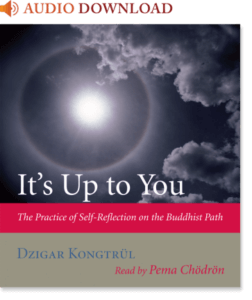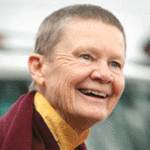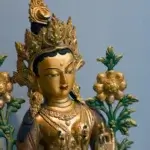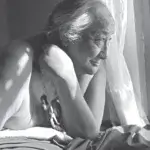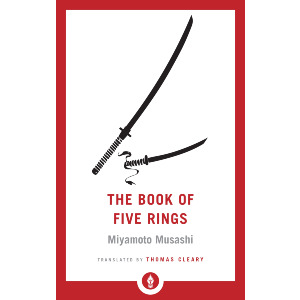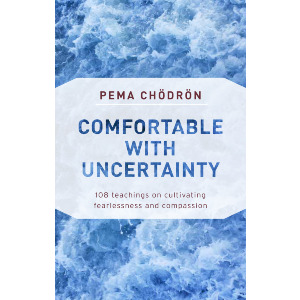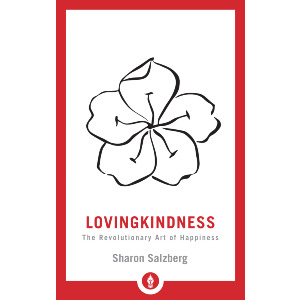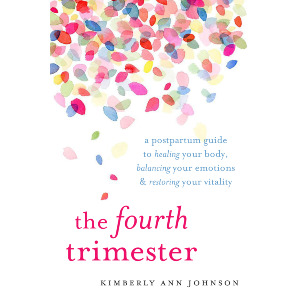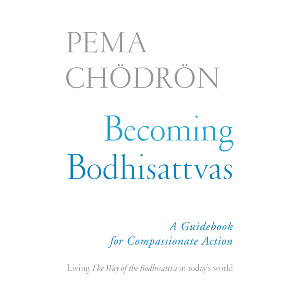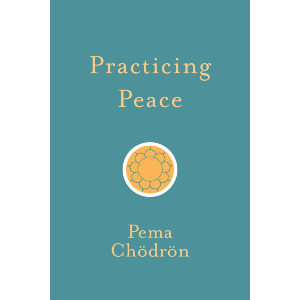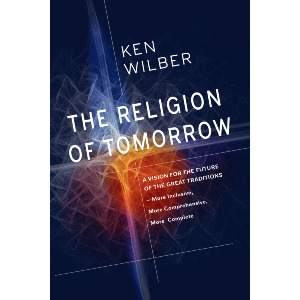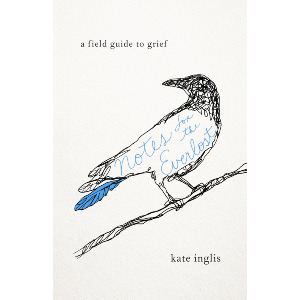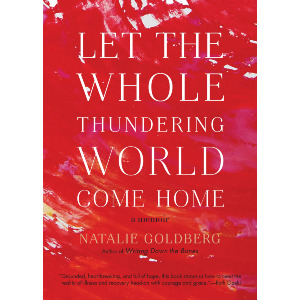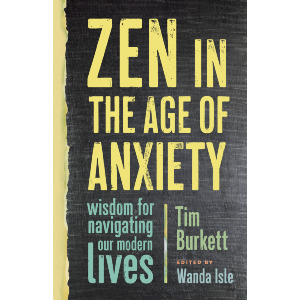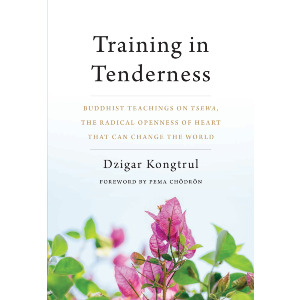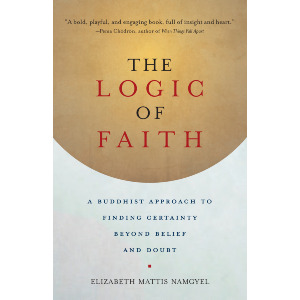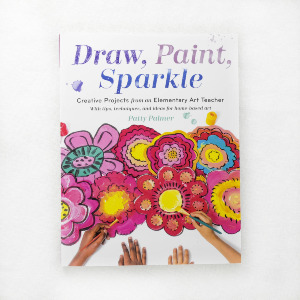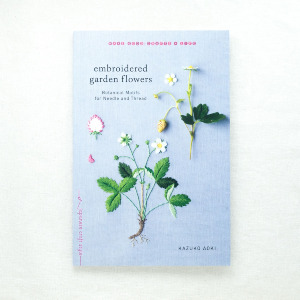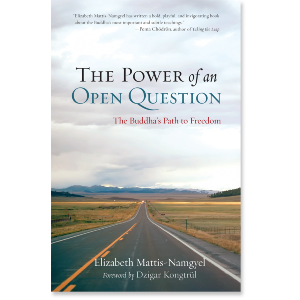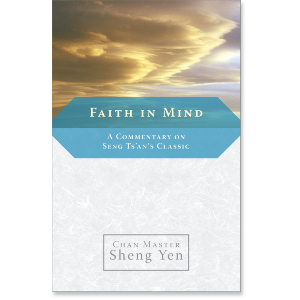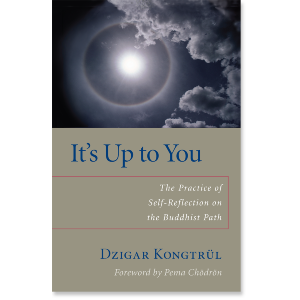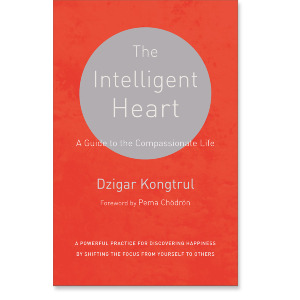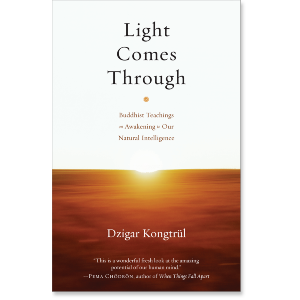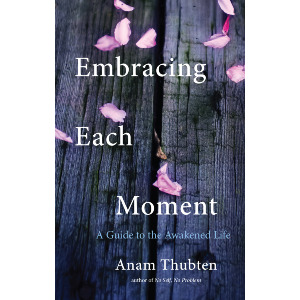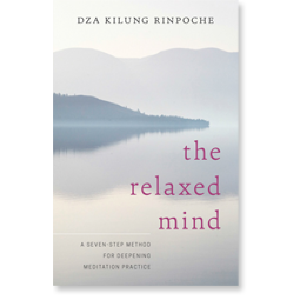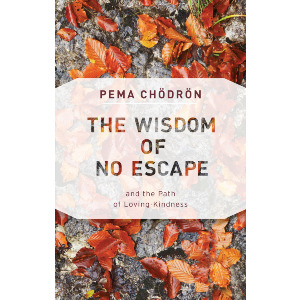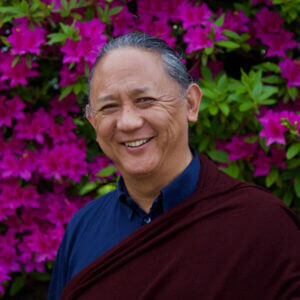
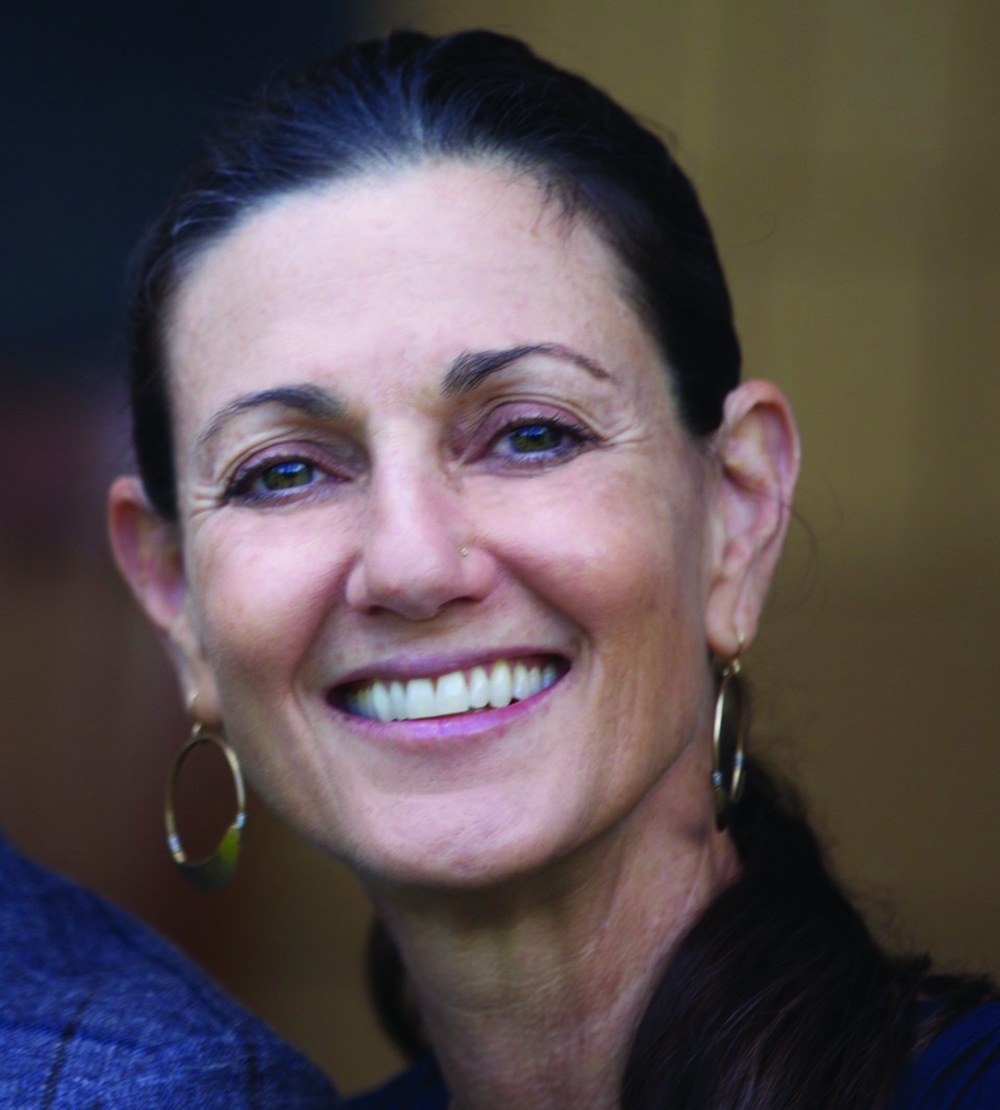

Elizabeth Mattis Namgyel
Elizabeth has studied and practiced Mahayana Buddhism, as well as the Vajrayana tradition of the Longchen Nyingthik, for over 30 years under the guidance of her teacher and husband, Dzigar Kongtrul Rinpoche. She has been intimately involved with Rinpoche’s work in bringing Buddhist wisdom to the West, in particular the development of Mangala Shri Bhuti, an organization dedicated to the study and practice of the Longchen Nyingthik lineage. She is also a founding member and teacher of the Wilderness Dharma Movement and on the advisory boards of Prison Mindfulness Network and the Buddhist Arts and Film Festival.
Elizabeth has an academic background in anthropology and Buddhist studies. After many years of solitary retreat, Rinpoche appointed Elizabeth as Retreat Master at Longchen Jigme Samten Ling, Mangala Shri Bhuti’s retreat center in southern Colorado. Elizabeth is the author of The Power of an Open Question and The Logic of Faith. She has edited Dzigar Kongtrul Rinpoche’s two books, It’s Up to You and Light Comes Through, and teaches the Buddhadharma throughout the United States and Europe. When she is not traveling, she enjoys riding her horse through the vast planes of the San Luis Valley in Crestone, Colorado.
Elizabeth Mattis Namgyel
Elizabeth has studied and practiced Mahayana Buddhism, as well as the Vajrayana tradition of the Longchen Nyingthik, for over 30 years under the guidance of her teacher and husband, Dzigar Kongtrul Rinpoche. She has been intimately involved with Rinpoche’s work in bringing Buddhist wisdom to the West, in particular the development of Mangala Shri Bhuti, an organization dedicated to the study and practice of the Longchen Nyingthik lineage. She is also a founding member and teacher of the Wilderness Dharma Movement and on the advisory boards of Prison Mindfulness Network and the Buddhist Arts and Film Festival.
Elizabeth has an academic background in anthropology and Buddhist studies. After many years of solitary retreat, Rinpoche appointed Elizabeth as Retreat Master at Longchen Jigme Samten Ling, Mangala Shri Bhuti’s retreat center in southern Colorado. Elizabeth is the author of The Power of an Open Question and The Logic of Faith. She has edited Dzigar Kongtrul Rinpoche’s two books, It’s Up to You and Light Comes Through, and teaches the Buddhadharma throughout the United States and Europe. When she is not traveling, she enjoys riding her horse through the vast planes of the San Luis Valley in Crestone, Colorado.
-
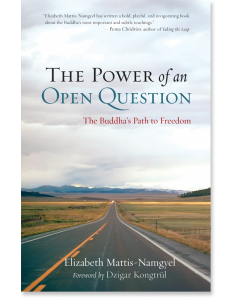 The Power of an Open Question$19.95- Paperback
The Power of an Open Question$19.95- PaperbackBy Elizabeth Mattis Namgyel
Foreword by Dzigar Kongtrul
GUIDES
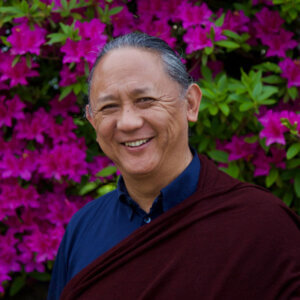
Dzigar Kongtrul Rinpoche: A Guide for Readers
About Dzigar Kongtrul Rinpoche
Dzigar Kongtrul was born in the Northern Indian province of Himachal to his parents Neten Chokling Rinpoche and Mayum Tsewang Palden. During his monastic education, he was trained in the Nyingma school's Longchen Nyingtik lineage under his root guru, the renowned Dilgo Khyentse Rinpoche. Additionally, he studied extensively under Tulku Urgyen Rinpoche and Nyoshul Khen Rinpoche.
In 1989, he moved to the United States with his family where he began a five-year tenure as professor of Buddhist philosophy at Naropa University. He later founded Mangala Shri Bhuti, with the intent to establish a genuine sangha of the Longchen Nyingtik in the west. At present MSB has five main centers including two in Colorado, and one in Vermont, Brazil, and India along with several Mangalam Dharma Groups around the world.
When not guiding students in long-term retreats and not in retreat himself, Rinpoche travels widely throughout the world teaching and furthering his own education. He is also an avid artist, seeing creativity as an extension of his Dharma practice.
"The goal of most conventional thinking is to preserve the ego. This is our unconscious habit and default mode. The unconventional thinking of dharma, however, aims to preserve the peaceful heart of tsewa. This requires conscious reasoning that is based on wisdom rather than habit."
-Dzigar Kongtrul, Peaceful Heart
Peaceful Heart
The Buddhist Practice of Patience
by Dzigar Kongtrul Rinpoche
An introductory guide to cultivating patience and opening your heart to difficult circumstances from leading Buddhist teacher, Dzigar Kongtrul Rinpoche.
In the Buddhist tradition, “patience” is our mind’s ability to work positively with anything that bothers us—a vast spectrum of particulars that all boil down to not getting what we want or getting what we don’t want. In fluid, accessible language, Dzigar Kongtrul expands on teachings by the ancient sage Shantideva that contain numerous powerful and surprising methods for preventing our minds from becoming consumed by what bothers us—especially in anger. The result of practicing patience is a state of mind where we can feel at home in every situation and be fully available to love and care for others. Patience is the lifeblood of a peaceful heart.
Training in Tenderness
Buddhist Teachings on Tsewa, the Radical Openness of Heart That Can Change the World
by Dzigar Kongtrul Rinpoche
This is a call to a revolution of heart. In Tibetan Buddhism, it is taught that one of the most essential qualities of enlightenment is tsewa, a form of warm energy and openness of heart. It is the warmth we express and receive through empathy with others, especially those closest to us. In this compact book, Dzigar Kongtrul opens the door to this life-changing energy and shows us how to transform our attitude toward ourselves and those around us through its practice. This is a guide to the building blocks of compassion and the purest and deepest form of happiness. And with these tools, we can awaken the most powerful force for healing our fractured world—a tender, open heart.
Pema Chödrön on Training in Tenderness
"Dzigar Kongtrul stresses the importance of having a good relationship with oneself; otherwise, the path of awakening can backfire and fuel discouragement."
-Pema Chödrön, No time to Lose
The Intelligent Heart
A Guide to the Compassionate Heart
by Dzigar Kongtrul Rinpoche
Compassion arises naturally when one comes to perceive the lack of solid distinction between self and other. The Buddhist practice known as tonglen—in which one consciously exchanges self for other—is a skillful method for getting to that truthful perception. In this, his commentary on the renowned Tibetan lojong (mind training) text the Seven Points of Mind Training, Dzigar Kongtrul reveals tonglen to be the true heart and essence of all mind-training practices. He shows how to train the mind in a way that infuses every moment of life with uncontrived kindness toward all.
"The Intelligent Heart shines a clear light on the method for exchanging self for other, developing compassion, and freeing one’s heart. In addition, it’s fun to read, with helpful illustrations and a keen sense of humor."
—Sharon Salzberg, author of Lovingkindness and Real Happiness
Light Comes Through
A Guide to the Compassionate Heart
by Dzigar Kongtrul Rinpoche
Buddhahood, says Dzigar Kongtrül, is nothing but an unobstructed experience of the nature of mind, boundlessly spacious and limitlessly compassionate. The trick is that in order to see the mind accurately, we must use the particular aspect of mind he calls natural intelligence. Natural intelligence enables us to discriminate between what helps or hinders us. But most of all, it’s the part of us that searches for happiness and meaning. In Light Comes Through, he shows us how to skillfully use our wish for happiness as a tool in awakening to the joyous wisdom of mind.
It's Up to You
The Practice of Self-Reflection on the Buddhist Path
by Dzigar Kongtrul Rinpoche
On the spiritual path we speak of enlightenment. But how do we reconcile the idea of enlightenment with what we see when we look in the mirror—when insecurities, doubts, and self-centered tendencies arise in our minds? Dzigar Kongtrül suggests that we need not feel “doomed” when these experiences surface. In fact, such experiences are not a problem if we are able to simply let them arise without judging them or investing them with so much meaning. This approach to experience is what Kongtrül calls self-reflection.
Self-reflection is a practice, a path, and an attitude. It is the spirit of taking an interest in that which we usually try to push away. When we practice self-reflection we take liberation into our own hands and accept the challenge and personal empowerment in Kongtrül’s title: it’s up to you.
Related Reading Guides
Related Reading
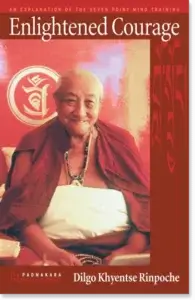
Enlightened Courage
An Explanation of the Seven-Point Mind Training
by Dilgo Khyentse Rinpoche
Highly respected by thousands of students throughout the world, Dilgo Khyentse Rinpoche was one of the foremost poets, scholars, philosophers, and meditation masters of our time. Here he speaks frankly, drawing on his own life experience. Condensing the compassionate path to Buddhahood into practical instructions that use the circumstances of everyday life, Rinpoche presents the Seven-Point Mind Training—the very core of the entire Tibetan Buddhist practice.
Dilgo Khyentse Rinpoche
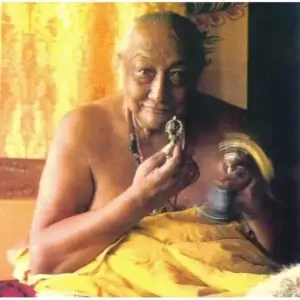 Dilgo Khyentse Rinpoche (1910–1991) was a highly accomplished meditation master, scholar, and poet, and a principal holder of the Nyingma lineage. His extraordinary depth of realization enabled him to be, for all who met him, a foundation of loving-kindness, wisdom, and compassion. A dedicated exponent of the nonsectarian Rime movement, Khyentse Rinpoche was respected by all schools of Tibetan Buddhism and taught many eminent teachers, including His Holiness the Dalai Lama. He tirelessly worked to uphold the Dharma through the publication of texts, the building of monasteries and stupas, and by offering instruction to thousands of people throughout the world. His writings in Tibetan fill twenty-five volumes.
Dilgo Khyentse Rinpoche (1910–1991) was a highly accomplished meditation master, scholar, and poet, and a principal holder of the Nyingma lineage. His extraordinary depth of realization enabled him to be, for all who met him, a foundation of loving-kindness, wisdom, and compassion. A dedicated exponent of the nonsectarian Rime movement, Khyentse Rinpoche was respected by all schools of Tibetan Buddhism and taught many eminent teachers, including His Holiness the Dalai Lama. He tirelessly worked to uphold the Dharma through the publication of texts, the building of monasteries and stupas, and by offering instruction to thousands of people throughout the world. His writings in Tibetan fill twenty-five volumes.
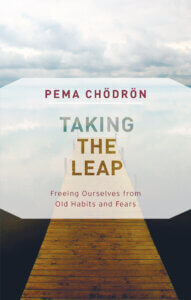
Taking the Leap
Freeing Ourselves from old Habits and Fears
by Pema Chödrön
Ever feel trapped in the same old habits and painful emotions time and time again? These are patterns we all face, and sometimes they feel impossible to shake. So how can we get unstuck? Drawing on time-honored Buddhist teachings on shenpa (all the attachments and compulsions that cause us suffering), Pema Chödrön shows how certain habits of mind tend to “hook” us and get us stuck in states of anger, blame, self-hatred, addiction, and so much more—and, most of all, how we can liberate ourselves from them. “This path entails uncovering three basic human qualities,” explains Pema. “They are natural intelligence, natural warmth, and natural openness. Everyone, everywhere, all over the globe, has these qualities and can call on them to help themselves and others.” Pema shares insights and exercises from her lifetime of practice that we can immediately put to use in our lives to awaken these essential qualities and help us to take a bold leap toward a new way of living—one that will bring about positive transformation for ourselves and for our troubled world.
Dzigar Kongtrul Rinpoche and Pema Chödrön Discuss the Innate Tenderness of Our Hearts
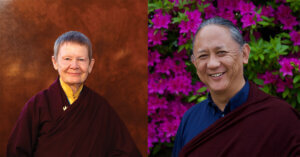
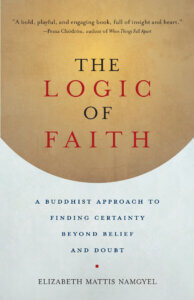
The Logic of Faith
A Buddhist Approach to Finding Certainty Beyond Belief and Doubt
by Elizabeth Mattis-Namgyel
Faith is a thorny subject these days. Its negative expressions cause many to dismiss it out of hand—but Elizabeth Mattis Namgyel urges us to reconsider, for faith is really nothing but our natural proclivity to find certainty in a world where certainty is hard to come by. And if we look carefully, we’ll discover that the faith impulse isn’t separate from reason at all—faith and logic in fact work together in a playful and dynamic relationship that reveals the profoundest kind of truth—a truth beyond the limits of “is” and “is not.” Using the traditional Buddhist teachings on dependent arising, Elizabeth leads us on an experiential journey to discover the essential interdependence of everything—and through that thrilling discovery to open ourselves to the whole wonderful range of human experience.
Elizabeth Mattis Namgyel
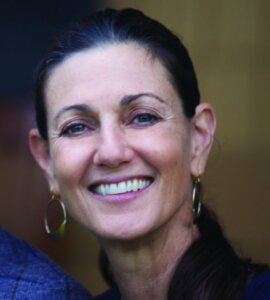
Elizabeth has studied and practiced Mahayana Buddhism, as well as the Vajrayana tradition of the Longchen Nyingthik, for over 30 years under the guidance of her teacher and husband, Dzigar Kongtrul Rinpoche. She has been intimately involved with Rinpoche’s work in bringing Buddhist wisdom to the West, in particular the development of Mangala Shri Bhuti. She is also a founding member and teacher of the Wilderness Dharma Movement, the Middle Way Initiative, and on the advisory boards of Prison Mindfulness Network and the Buddhist Arts and Film Festival.

This holiday season we care about hearing what you have to say. Below are some thoughtful quotations from readers on their favorite Shambhala books.
Do you have one you'd like to share? Tell us about it in the comment section at the bottom.

“The book can be taken literally as a way to master ancient samurai techniques, or it can be taken metaphorically on how to manage business or political deals.”
—Rachel
“This book has made its way from my bookshelf to my bedside table numerous times over the years.”
—Shelley
“Sharon Salzberg has a true gift for putting into words and examples the teachings of the Buddhist path so that it is clear they truly do apply to everyday life.”
—Dominique
“A brilliant book documenting the social, emotional, physical, psychological, and cultural changes happening to women during the massive transformation that is becoming a new mother.”
—Sarah
“Chödrön speaks to anyone who’s willing to stick with her as she explores what becoming a bodhisattva means. She points out examples of bodhisattvas, including Jesus, Mother Teresa, MLK, and Gandhi, who may be more relatable to her Western readers than Shantideva or various monks in the Tibetan Buddhist tradition.”
—Linsey
“I found myself underlining, copying quotes, and going back to ponder ideas and applications, over and over.”
—Judy
“His genius of integrating our history of religion and their great traditions gives a greater vision for how we, as humans, may better live this vision by deepening connections to our sameness as we move up the developmental ladder of our differences, where we embrace a greater, higher love that clearly drives our entire existence and evolution.”
—Mary
“Kristin gives clear, excellent directions for a variety of crafts, including sewing, painting, embroidery, and fabric stamping, and helps her readers understand how to combine colors and patterns to achieve glorious results.”
—Ferguson
$35.00 - Hardcover
“If you love colorful, healthy food with a unique twist, then this is for you.”
—Roberta
“What I especially enjoy about this book is that it explains, in clear, easy to understand language, what happens to our bodies as we age and how yoga can help us live a life of greater ease.”
—Rosemary
“Sculpted with tenderness, beauty, and lyric storytelling, Kate Inglis walks the reader gently and lovingly through the process of grief by bearing her own heart, her own soul, and her own loss.”
—Siobhan
“The More With Less cookbook is now my all time favorite/go-to cookbook for both everyday meals and special dinners for friends and family.”
—Patricia
“Natalie fans will be transfixed and unnerved by this honest narrative of the cancer experience.”
—Jerser
“Looking at our natural human fears through the lens of Zen Buddhism, Burkett takes us into the areas of our deepest pains and guides us on how to process and release them by looking inward through meditation.”
—Kathy
“Training in Tenderness is an insightful, practical guidebook on how to soften the heart and be more in touch with the world around us.”
—Jim
“This book is an invitation to investigate your assumptions and explore the interdependence of everything.”
—Christine
“Every page is a delight to the eye and makes you want to get out those art supplies and start painting!”
—Bob
“Jacobs takes you to faraway places and makes you want to dust off your suitcase and book a trip immediately.”
—Maria
“Here's what I love most about this book: even if you have precisely zero experience with any part of printing your own fabric patterns, you'll get everything you need to get started.”
—Elizabeth
“A very cute book if you are into embroidery and looking for some inspiration, or trying some new stitches.”
—Javiera
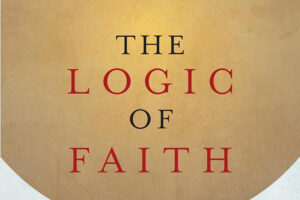
The F-Word | An Excerpt from The Logic of Faith
Introduction
This entire book hinges on the word faith. You may assume that you know what that means. You may think that it has a single, clear definition. But words are not definitive structures: one word can have limitless—even opposing—meanings. Language morphs over time, and words take on different meanings depending on their contexts. You’ll likely find as many definitions of faith as there are people to define it. Try asking around.
Just to give you an idea of some of the possible usages for the word faith, look at a standard English dictionary, which will most likely include in the definition such terms as dogma, religion, fundamentalism, doctrine or indoctrination, confidence, trust, conviction, and spiritual insight, to name a few. People make strong statements about faith, such as, “Faith without doubt leads to moral arrogance” or “If you don’t have unwavering faith in God, you will go to hell.” Some people feel that those who claim to have faith are deceiving themselves. These people equate faith with the disempowerment that results from blindly handing over agency to an authority figure. For others, faith describes the highest expression of human consciousness that transports us beyond the petty concerns of mundane life. Upon reflection you may notice that you use the term faith in various ways. But notice too that these varied usages have one thing in common: they reflect the desire to find ease in a world you can’t secure.
Upon reflection you may notice that you use the term faith in various ways. But notice too that these varied usages have one thing in common: they reflect the desire to find ease in a world you can’t secure.
Do you think it would even be possible to live in the world without faith? Because we rely on life around us, it seems to me we have no choice but to have faith. The late Buddhist teacher Thinley Norbu Rinpoche linked faith to the nature of existence when he said, “Cows have faith in grass.” This statement may seem simplistic at first glance, but it has deep implications. You cannot remove faith from the equation of your earthbound relative condition. That you depend on the world in which you live keeps you living in faith, and there is no way around it. Given the multiplicity of definitions one finds around faith and given how crucial it is to our very existence, faith is worthy of deep consideration.
The End of Faith?
At some point, after an extended period of exploring faith through personal practice and study, I decided to bring my investigation out into the world to see what others thought. I quickly learned that when I described my teaching topic using the word faith, no one was interested. In fact, once, when I was doing an online program on faith, someone wrote in on the chat, “This is just the mentality my grandmother had!” It was as though, by simply uttering the f-word, I had insulted his intelligence. For him faith was something that could only be outdated and backward. I have, by the way, noticed that the f-word does not generally go over well at Buddhist conferences either.
Subsequently, I started to call my inquiry “The F-Word”—and after that everyone wanted to talk. People are drawn to things that have a rebellious flare. And so I did what I had to do in order to draw attention to a topic that I feel is in desperate need of examination.
Subsequently, I started to call my inquiry “The F-Word”—and after that everyone wanted to talk. People are drawn to things that have a rebellious flare. And so I did what I had to do in order to draw attention to a topic that I feel is in desperate need of examination. As spiritual practitioners, scholars, and human beings looking for a sense of ease, it behooves us to reflect on the things that incite discomfort in us or that we don’t understand, rather than simply buying into or rejecting them.
Many contemporary thinkers want to do away with the word faith altogether and replace it with the term spirituality. In his book The End of Faith, Sam Harris links faith to terrorism, and reasonably so. People do unconscionable things in the name of faith. And yet I wonder, can we afford to do away with the word faith altogether? Personally I think that would be way too easy. I’m not saying the word spirituality doesn’t have its use in the English language. But if you are not careful, spirituality can quite easily allow you to bypass the human dilemma, because spirituality can be anything you want it to be, whereas faith will challenge you. It’s not so comfortable. It carries with it the undeniable tension between your search for security and the limits of your ability to know. Faith keeps your spiritual quest relevant and connected to the heart of the human predicament.
My concern also is that by narrowing the definition of faith to blind acceptance or dogma, we risk losing genuine traditions of contemplative wisdom and practice that include faith. The initial function of spirituality emerged from questioning the human condition and also from deep experiences of wonder. The word religion itself, initially meaning to “reconnect,” seems to have come from direct experiences of something larger than just a set of fixed ideas. It marked a return to something essential that we just failed to recognize in the myopia of our everyday lives. How curious that we turn experiences of awe into dogmas and stagnant ideas. That we have come to associate faith with fundamentalism, blindness, and even terrorism gives us something important to look at.
Pratityasamutpada
So how does one look at faith—both as an experience and a cultural narrative—without closing down around dogmas and fixed ideas? I’m glad you asked. In this book I will introduce to you some methods of investigation that will address this very challenge. The basic approach we will take can be traced back to the very moment of the Buddha’s awakening.
When the Buddha attained enlightenment beneath the Bodhi tree in Bodh Gaya, India, he gained insight into the secret of the universe. It was from this insight that he revealed the powerful principle of pratityasamutpada, which is commonly known by its English translation, “dependent arising.” Pratityasamutpada describes how everything we experience—both material and conscious—arises, plays out, and falls away in reliance upon an infinite web of contingent relationships. In other words, it is because things depend that life moves and we can experience it.
For those who study and practice the Buddha’s path, his description of dependent arising has become a fresh and unimpeded way of perceiving mind and its world, and the primary understanding that makes liberation possible. It would be accurate to say that this very insight into the nature of dependent arising was the pivotal revelation of the Buddha, from which all of his subsequent teachings unfolded. It was also the wisdom that my teacher was pointing out to me through his simple gesture years ago.
It is important for me to say, and for you to understand, that although pratityasamutpada comes to us through a formal continuum of Buddhist practice and realization, it is not a dogma or a set of ideas to adhere to. Instead the wisdom of pratityasamutpada functions like a portal into a completely new way of understanding your mind and its world, based on direct experience. It is a powerful insight that you can use as a tool to free yourself from the confusions you have about your place in the world in which you live. I know that sounds like a big promise, but such insight is quite simple and natural, I assure you. In fact, once you step outside your habitual way of seeing things, you will marvel at its obvious truth.
Open Questioning
In the second century, the teachings on pratityasamutpada were revived and energized by the extraordinary spiritual genius Nagarjuna. He designed a series of methodical investigations based upon the Buddha’s insight into the nature of dependent arising that provide a way for whoever employs them to bring together discerning intelligence with a mind of complete openness. The sole purpose of these investigations is to guide us away from the abstract realm of ideas into a direct relationship with life.
There is something important to be said here about the quality of the mind while engaged in a process of inquiry. I have often used the example of “the mind of an open question” to describe it. An open question—as opposed to a question intent on an answer—is one that has not settled on a conclusion or shut down around beliefs or doubts. Rather, when you ask an open question, you remain receptive, humble, and connected to the living and dynamic nature of things. According to this tradition, such characteristics describe a mind poised for insight. In fact, where insight is concerned, it is only an open and attentive mind that is said to perceive its object without mistake.
The purpose for saying all this here is to let you know in advance that I wrote this book as an inquiry, and so it will require some participation and curiosity on your part. In addition to sharing my experience, I will pose many questions for you and introduce several guided investigations that have been passed down by realized Buddhist masters skilled in the ancient art of meditative inquiry. I will invite you to voyage into your own experience of faith because—let’s face it—there is no substitute for the certitude that results from seeing things directly for yourself.
To put it another way, what happens when we look at the world with fresh eyes and an open heart? Furthermore, what does it even mean to look here? How does one look? We will get into that in great depth. But for now, I just want to introduce the idea of dependent arising, pratityasamutpada, as your tool for exploring faith. And I want to make sure that you understand that although the methods used in this book come from the tradition of the Buddha, there is no assertion that insight itself is the possession of any one religion. We are all prone to moments of grace and clear seeing. And so, the term insight, as I use it here in this book, simply serves to describe an inherent potential in all of us.
To put it another way, what happens when we look at the world with fresh eyes and an open heart? Furthermore, what does it even mean to look here? How does one look?
Some of the methods presented in this book may challenge the assumptions you have about language, beliefs, doubts, spirituality, and the nature of knowing. They may bring to the fore some unexamined ideas you have about faith and even prompt you to rethink how you see yourself and the world in which you live. But then what’s an exploration without challenges?
This has been excerpted from The Logic of Faith: A Buddhist Approach to Finding Certainty Beyond Belief and Doubt.
Related Books

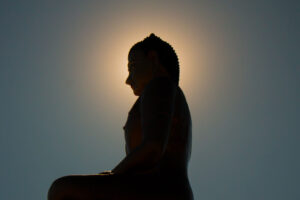
The Nyingma Summer Seminar: Reflections on a Buddhist Retreat
By Sanje Phillips
This July, I attended the Nyingma Summer Seminar at the Mangala Shri Bhuti retreat land in Ward, Colorado, with Dzigar Kongtrül Rinpoche, Elizabeth Mattis Namgyel (wife), and Dungse Jampal Norbu (son). Over one hundred attendees with varied demographics sat daily meditation sessions, participated in the teachings, endured periods of silence and the usual “plain but healthy” retreat food. My experience was resoundingly positive, as we had an opportunity to explore the depths of many traditional and profound Buddhist teachings. All three vehicles were presented consecutively, beginning with foundational Buddhism the first two days, Mahayana philosophy and practice the next four days, and finally the Vajrayana the last three days. Among the essential teachings were the four noble truths, the noble eight-fold path, impermanence, suffering, the Twelve Nidānas and karma, emptiness, compassion, the Pāramitās, guru devotion, and pure perception. Each yana was explained concisely and flowed naturally into the next. When a point was given regarding the Mahayana, we would often reflect back to the foundational view and practice in order to explain clearly its essential role in leading to true Mahayana understanding and then, in turn, how Vajrayana rests on Mahayana foundations. The Mahayana teaching of Bodhicitta, in its prerequisite role leading into Vajrayana, was the most emphasized aspect of the Buddhist path presented by Rinpoche and supporting student teachers. Bodhicitta, the heartfelt longing to attain enlightenment for the benefit of all sentient beings, permeated the teachings, teachers, and students of the Mangala Shri Bhuti sangha as the ground we worked upon.
At this point in my spiritual journey, I felt ready for a jump in my understanding of Bodhicitta. Six months prior to the retreat I began reading Rinpoche’s book, The Intelligent Heart, which I felt generated a major internal shift; I was, therefore, excited to attend his teachings in person. Thus far my Buddhist practice consisted mostly of calm-abiding, self-kindness practices, and Buddhist contemplations on impermanence, suffering, and emptiness. I had been introduced to teachings on compassion for others, such as Tonglen (exchanging self for other) and Lojong (mind training), but I was always content with sitting meditation, counting on the altruistic mind to arise organically. Although this may be an accepted approach, the lack of formal bodhicitta practice hindered its cultivation, resulting in a staleness in my shamatha and contemplations. As with many practitioners, I felt something was missing. I have heard of equating the spiritual path with the healing of the body after injury. Through the help of a physician, we can approach the body‘s illness holistically; rarely is there only one thing ailing our body or one problem that screams for our attention and care. Similarly, the spiritual journey presents us with a variety of different neuroses and energy blocks where we must exercise certain muscles and take different medicines accordingly. Bodhicitta and Tonglen were the medicines I needed most at this point on my path, with Rinpoche acting as the physician and the Sangha as the proven test trials.

Rinpoche’s confidence in the effectiveness of the dharma and of bodhicitta to unravel ego were most inspiring for me. Rinpoche speaks with an eloquent, gentle, and straightforward clarity. In his books and in person, he exudes trust in the teachings and a confidence in his students‘ ability to progress, given only that they possess diligence, correct view, and proper motivation, which he reasserts with every teaching. Rinpoche’s style is captured well in the following passage from his book Light Comes Through:
“Buddhist meditators often experience doubt in their practice. They expect to have strong practice results all of the time and get disheartened when they don’t. One of my teachers, Khen Rinpoche, once said that when you put an apple seed in the ground, first a shoot sprouts; we don’t expect to see blossoms and apples right away. But the sprout encourages us—from something small, dry, hard, and round emerges a green root. It shows us the possibility of a tree. On the spiritual path it is the same. When we apply ourselves, we begin to witness small changes along the way. We may simply hear a teaching on impermanence and see from our experience that it is true. As we continue to apply the teachings, we begin to also see our mind becoming freer and more wholesome, peaceful, and clear (pp. 78 - 79).”
Furthermore, while being rooted in the heart, Rinpoche also writes in classic Nyingma style: “Here is the view, cultivate right motivation, try these practices, see the results.” This style is apparent in his writings and workshops, yet it is common for Rinpoche to revert back and forth from a classic style to less formal, as in the passage above. All in all, devotion did not turn into adulation, as Rinpoche habitually turned it back on his students to develop independence in their practice and to rely on their own strength, not just on the guru blessings. Additionally, I found Elizabeth and Jampal both added so much to the program, unpacking Rinpoche’s teachings in their subsequent talks, answering questions, and contributing their own insights and practice experience.
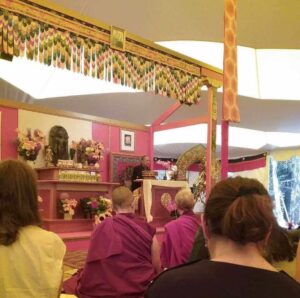
Meanwhile, it was uplifting seeing everyone engaged for such long talks. Often, though I was fully engaged, it would be some minutes after leaving the shrine tent that the magnitude of what had been transmitted became apparent through direct experience. A few days into the retreat I had one such experience. After leaving a teaching in the shrine tent, I made myself some tea and used the restroom, setting my tea outside the stall on a railing. When I came out a mosquito had drowned in my tea, which struck me on a deep emotional and spiritual level. Among the topics discussed that morning, some intellectually denser than others, compassion and the tender heart were certainly among them. I remember feeling so affected by this tiny insect. Never had I felt so vulnerable and conscientious of such a small being. There was a feel of equanimity, that this mosquito, this bloodsucking, ugly parasite deserved every bit as much love and attention as I did. I felt this insect just like me so wished to be happy and avoid suffering, and it had quite simply come to a rough point in its karmic disposition. Sure, intellectually I recognized, on a conventional level, the insignificance compared to a human passing away, but somewhere unspoken, deep in my heart, there was a feeling of complete equanimity. It wasn’t that the death of a mosquito was such a big deal, but rather that for a period of time I was able to care about something, however small, more so than my own self-attachment. I felt it gave meaning to my morning and hopefully to the mosquito’s life as well. I remember feeling a lot of space and tender heartedness for beings who so desperately cling to life’s fleeting hooks of enjoyment. All the while I felt appreciation for my good conditions and my encountering of spiritual practice in the vision of directing my life toward eventual liberation.
From attending the Nyingma Summer Seminar, I feel Mangala Shri Bhuti is a great example of a modern Western sangha. The retreat atmosphere and the support of its teachers and students allowed for me to work diligently with my own self- destructive thoughts. I could come each day, excited to work with my pain because I trusted in the profundity of bodhicitta and its ability to transform self-centered pain into wisdom and compassion.
Related Books
EVENTS
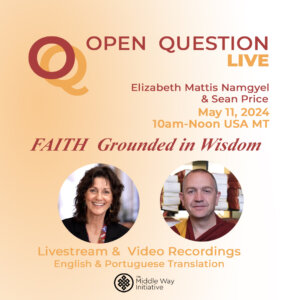
OQ Live Conversation: Faith: Grounded in Wisdom with Elizabeth Mattis Namgyel and Sean Price
May 11, 2024 / 10am MST | Online
Join us on Saturday May 11, 2024 from 10 am - Noon USA MT for the Open Question Live Conversation "Faith: Grounded in Wisdom" with Elizabeth Mattis Namgyel and Sean Price. Sean is a respected translator for the Dilgo Khyentse Fellowship/Shechen and is the Director of Tibetan Publications for the Tsadra Foundation. Elizabeth and Sean will discuss the 3 Wisdoms and cultivating the qualities of faith. Sean will bring forth the richness of translation by talking about the meaning of the English word "faith" as a translation for the Tibetan word "depa."
EVENT PRICING $35 (USD)
This event is an important source of financial support for The Middle Way Initiative teaching programs. Your generosity is appreciated. No one will be turned away for lack of funds.
...
